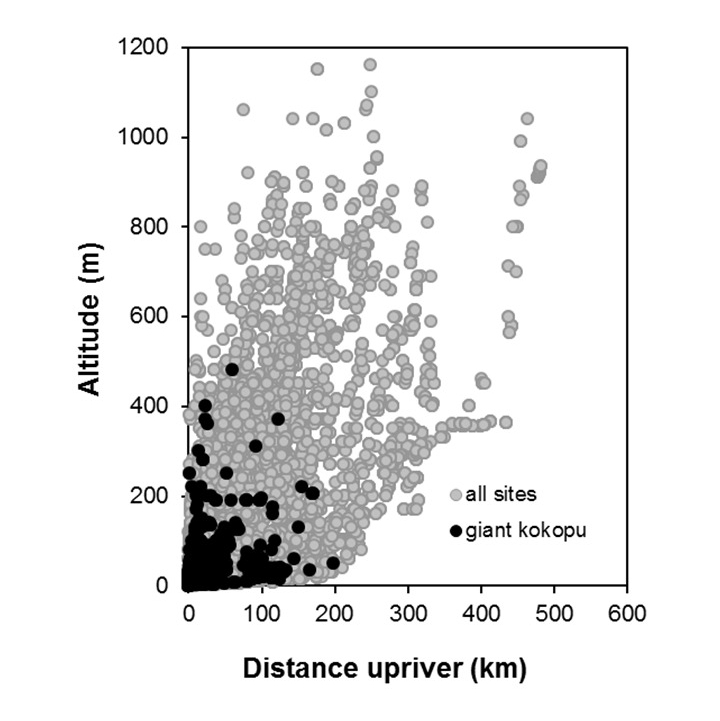Giant kokopu
Galaxias argenteus (Gmelin, 1789)

As its name implies, the giant kokopu is the largest member of the Galaxiidae family. Specimens of over 450 mm in length have been reported, although fish in the 200–300 mm range are far more common. The profusion of golden spots and other shapes on the bodies of larger fish are very distinctive, although small specimens may be difficult to distinguish from banded kokopu. The giant kokopu was the first Galaxiidae to be discovered, and it was its colour pattern that led to the generic name Galaxias, referring to the profusion of stars in the galaxy.
Many people are surprised to learn that giant kokopu are one of the whitebait species. However, giant kokopu are uncommon in the whitebait catch and usually run late in the season. Observations have confirmed that giant kōkopu follow a similar spawning strategy to the other whitebait species. Eggs are deposited in habitats only temporarily submerged by elevated water levels, where they then develop terrestrially, before hatching when the egg deposition sites are re-inundated during later high flows.
Giant kokopu are primarily a coastal species and do not usually penetrate inland very far. They are endemic to New Zealand but are found on the major offshore islands. Like banded kokopu and koaro, they can establish land-locked populations. In streams, they prefer the slow flowing waters that occur in lowland runs and pools. They are also usually associated with some form of instream cover like overhanging vegetation, undercut banks, logs, or debris clusters. It is thought that they lurk quietly in this cover awaiting their prey, which ranges from koura to terrestrial insects such as spiders and cicadas.
![Giant kokopu - distribution map [2024]](/sites/default/files/styles/wide/public/2024-02/Giant%20kokopu.jpeg?itok=88HzAlDV)


